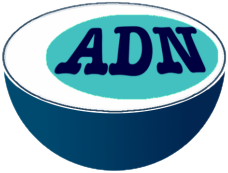Orateur
Summary
The nuclear envelope is not only a site of molecular exchange between cytoplasm and nucleoplasm through nuclear pores, but it is also functionally linked to key cellular processes such as cytoskeleton organization, 3D nuclear architecture and chromatin regulation.
In Arabidopsis cycling cells, the nuclear envelope is a site of microtubule nucleation and is also involved in nuclear movements. The presence of a nuclear plamina, considered as the human homologue of the lamina, was also related to chromocentre regulation. Chromocentres are mainly constituted of pericentromeric heterochromatin located in the close vicinity of the inner nuclear membrane. Centromeres are embedded in these chromocentres and require a tight regulation to maintain their identity, allowing further spindle fibre connexions.
We identified GCP3-Interacting Proteins (GIP1 and GIP2) and characterized their association with γ-tubulin complexes (1) as shown their human and fission yeast homologues. Besides the localization of GIPs at microtubule arrays, GIPs are also present on both sides of the nuclear envelope in plants. gip1gip2 KD mutants showed pleiotropic developmental phenotypes suggesting their involvement in various cellular functions. Indeed, these mutants are strongly affected in nuclear shaping and organization (2) as well as centromere organization (3).
We demonstrated that GIPs form a complex with CENH3 - the epigenetic marker of the centromere - using co-IP and colocalization assays with interphase nuclei. A decreased CENH3 loading was observed in the mutants beside high level of KNL2, the epigenetic regulator of CENH3 loading. This argues in favour of a role of GIPs in CENH3 loading and/or maintenance.
Centromere maintenance was also affected in the mutant where both centromeric and pericentromeric cohesion were reduced as shown by FISH experiments using specific probes on flow sorted nuclei.
Altogether, our data focused on the nuclear periphery provide a novel centromere regulatory model that needs to be further deciphered and explored in other Eukaryote organisms in which GIP proteins are conserved.
(1) Janski et al., Plant Cell, 2012
(2) Batzenschlager et al., Front. Plant Sci, 2013
(3) Batzenschlager et al., Proc. Natl. Acad. Sci. USA

